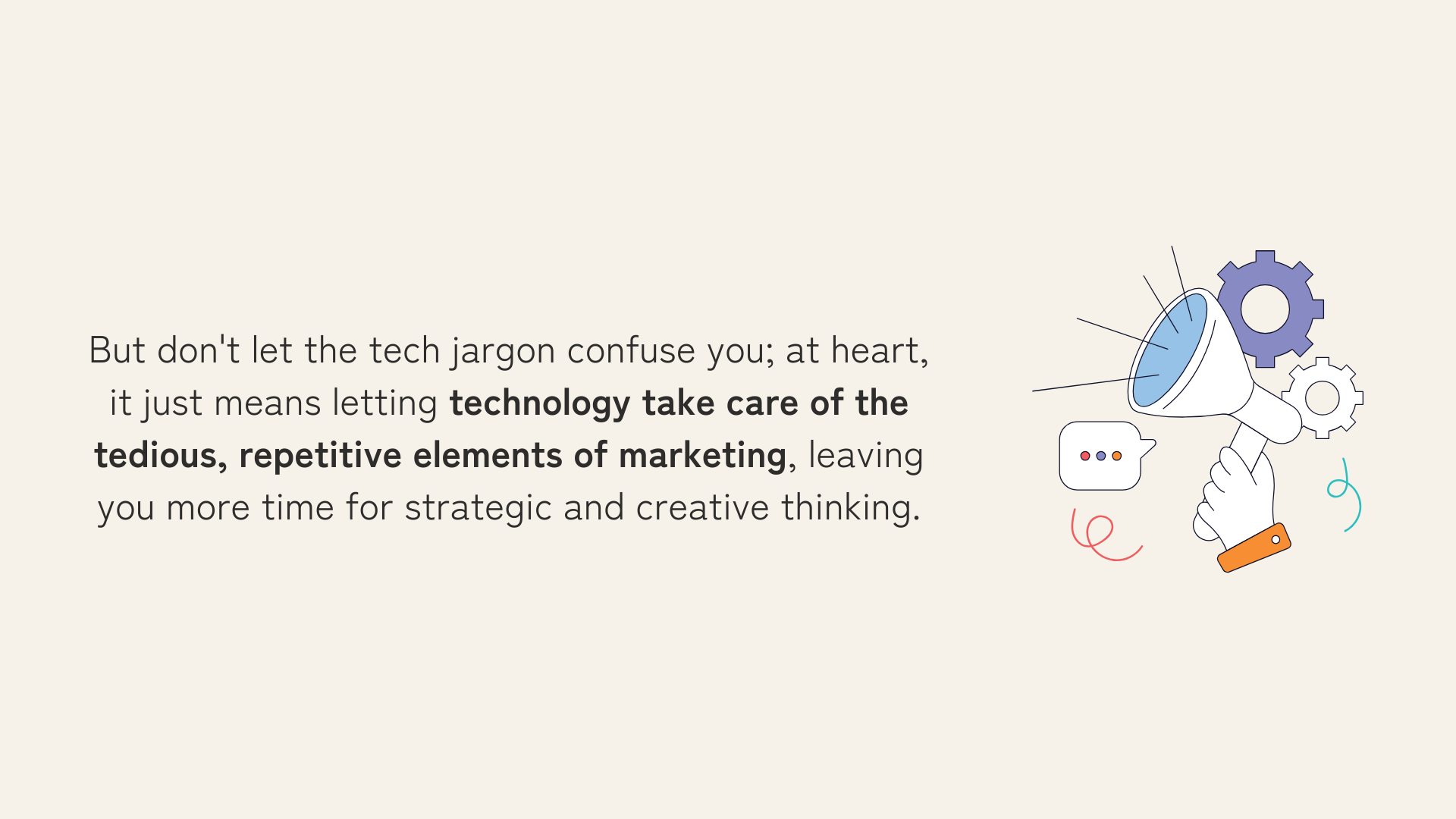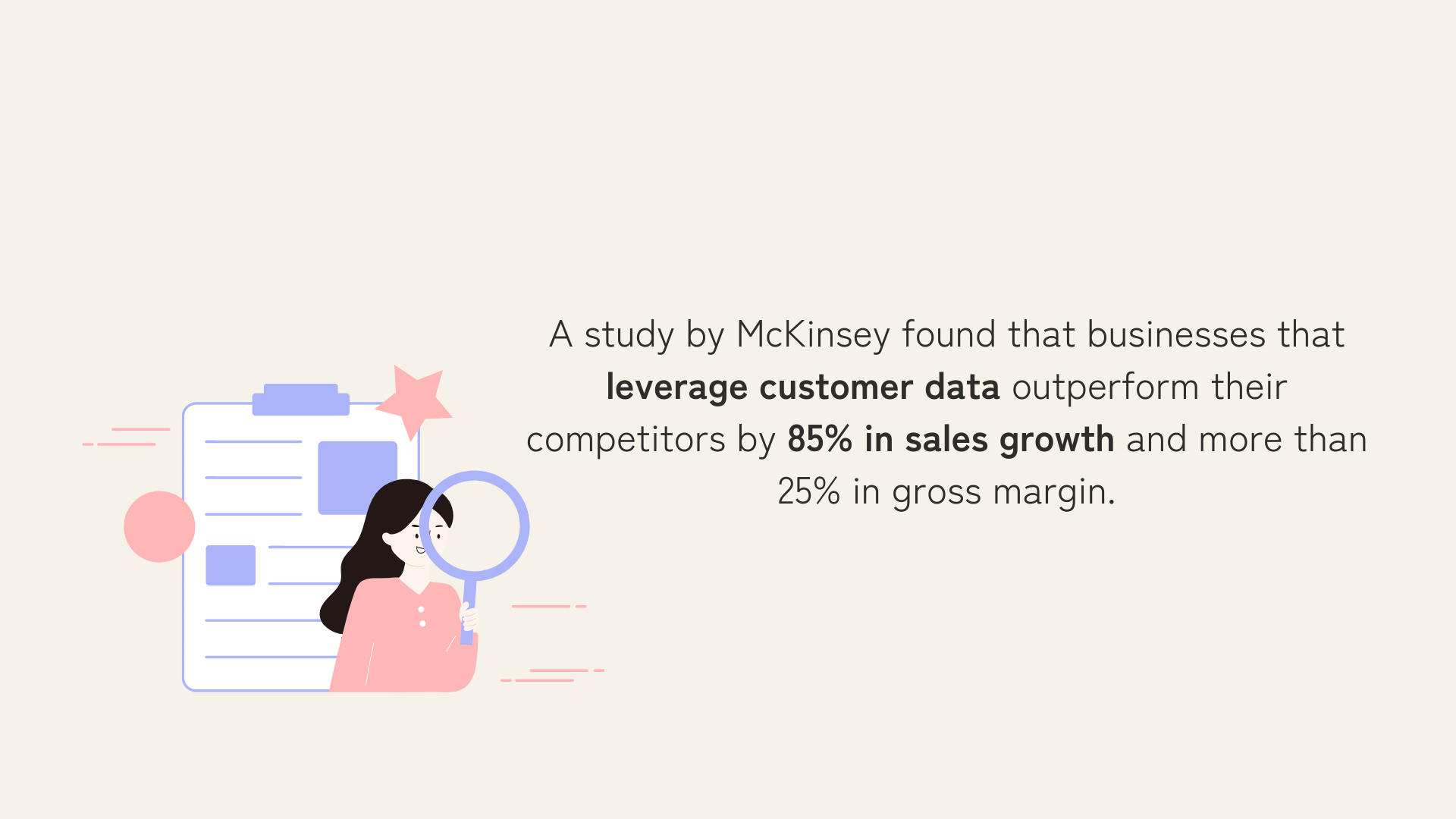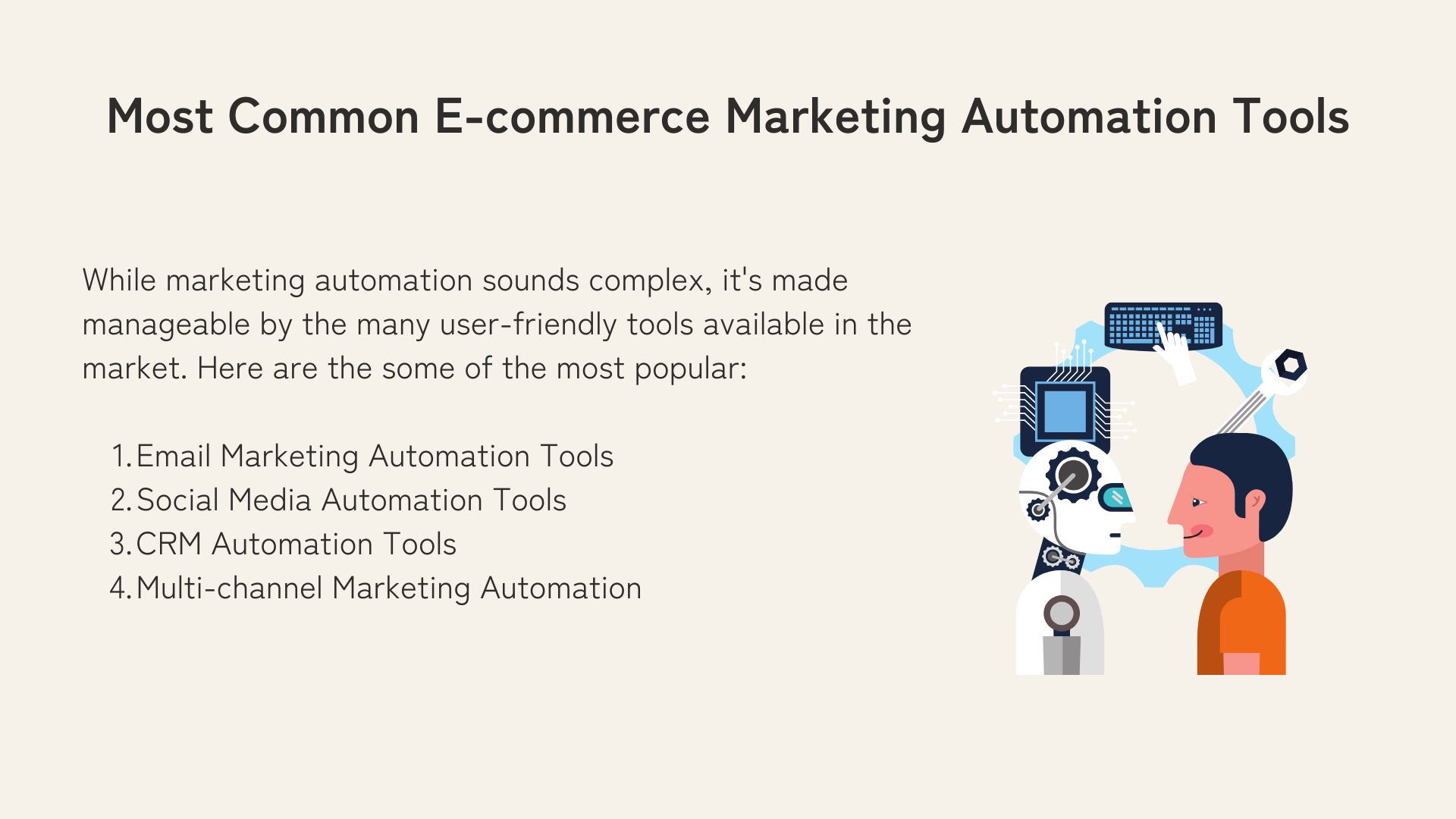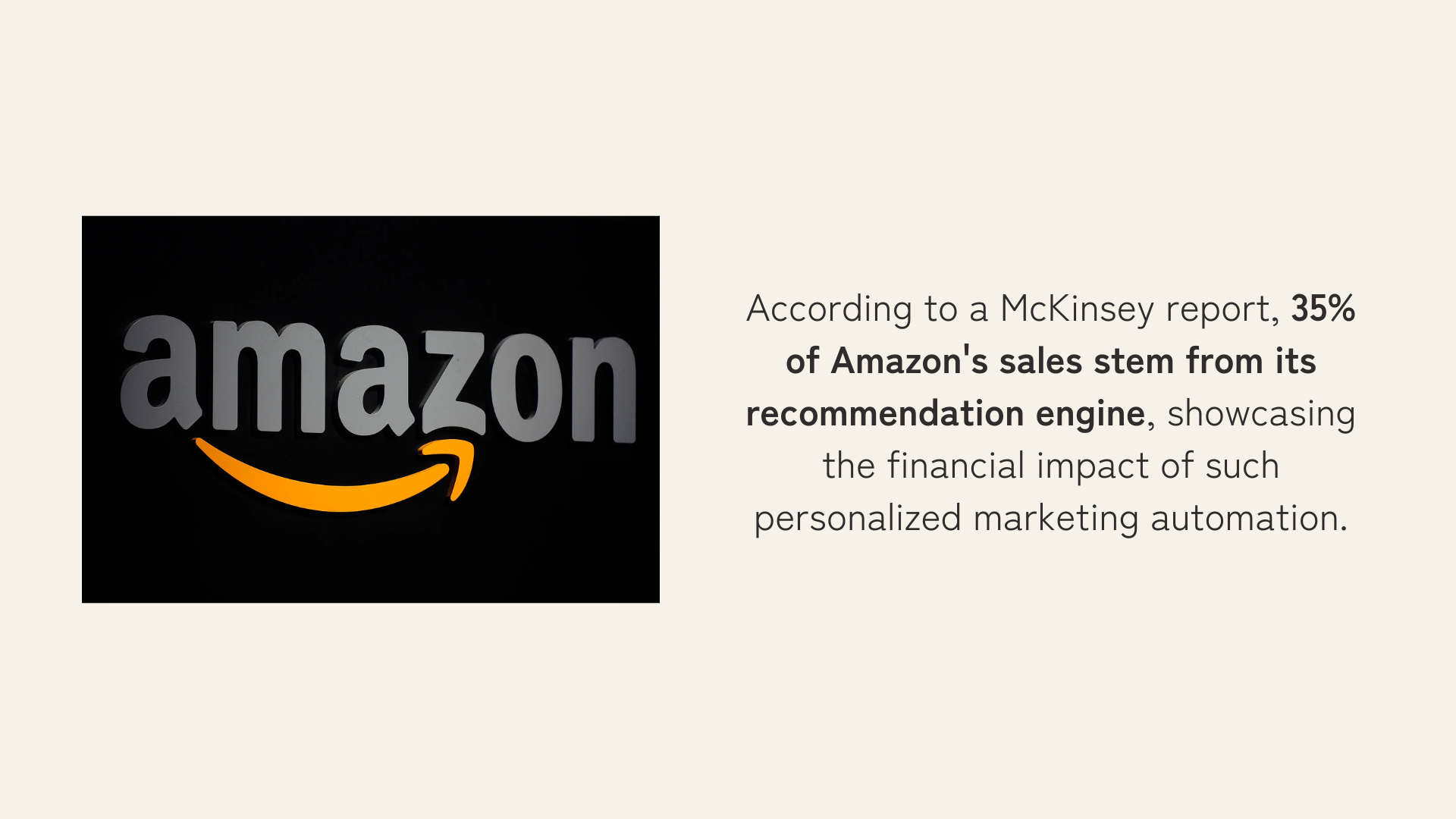Introduction
In the rapidly-evolving digital marketplace, marketing automation has become a game-changing tool for e-commerce businesses of all sizes.
Streamlining, optimizing, and automating marketing actions can greatly enhance efficiency and increase profit margins.
This beginner's guide will unpack everything you need to know about the role of marketing automation in e-commerce, its benefits, how to implement it effectively, and a success story from Amazon in implementing marketing automation.
What is E-Commerce Marketing Automation
E-commerce marketing automation is the process by which various marketing processes and tasks are automated using specialized software and technology.
These may include tasks like managing email campaigns, posting on social media, monitoring website traffic, and more.
For example, after a customer places an order, instead of manually sending out a confirmation email, the system automatically sends it, saving time and ensuring an immediate, professional response.

The Benefits of Marketing Automation for E-Commerce
1. Increased Efficiency
Speed and efficiency are key factors to succeed in the fast-paced e-commerce realm.
By deploying marketing automation platforms, you can significantly increase your efficiency, freeing up time to focus on other important tasks.
For instance, sending manual confirmation emails can be time-consuming. Instead, set up an automatic system to send these emails whenever a customer makes a purchase.
Not only does this save time, it ensures your customers receive timely responses.
2. Personalization at Scale
Personalization has become integral to successful marketing strategies, and automation makes it possible to deliver customization at scale.
Automated systems can personalize communication based on customer behavior and preferences.
This can significantly improve customer engagement, loyalty, and ultimately, revenue.
Let's say you run an online clothing store. You can set up your marketing automation software to send personalized emails to customers based on their past purchases.
If a customer recently bought a dress, for example, you might send them an automated email showcasing matching accessories.
As per a report by SmarterHQ, 72% of consumers say they only engage with personalized marketing messages tailored to their interests, highlighting the importance of customization.
3. Enhanced Customer Engagement and Retention
Marketing automation can enhance customer engagement and retention by delivering targeted, personalized content that resonates with customers at each stage of their journey.
Automation tools can send follow-up emails to customers after they make a purchase, asking for reviews, recommending other products, or offering discount codes for future purchases.
This enhances customers' experience, increases their engagement and builds loyalty.
According to Invesp, it costs five times more to attract a new customer compared to retaining an existing one, making customer retention crucial.
4. Better Tracking and Analytics
Marketing automation not only executes tasks but also tracks your marketing efforts and analyzes the outcome.
You can gain valuable insights like which emails are being opened, which links are being clicked, and which products are most viewed. This data allows you to refine your strategies for optimal performance.
For example, if your analytics show high click-through rates for emails sent on Tuesday morning but low rates for those sent on Friday afternoon, you might decide to schedule more of your emails to go out on Tuesday mornings.

5. Seamless Multi-Channel Marketing
Marketing automation enables seamless multi-channel marketing which involves interacting with customers across multiple channels, from emails and websites to social media and online advertisements, ensuring a consistent and integrated customer experience.
Consider a potential customer who visits your website and abandons their shopping cart.
With automation, you can send an email reminding them of their unfinished purchase.
If they don’t respond, you might retarget them with personalized ads when they're surfing on Facebook or Google.
Best Practices for Implementing Marketing Automation
E-commerce marketing automation is a powerful tool that can streamline repetitive tasks, personalize communication, and enhance customer experiences.
However, to effectively leverage it, businesses need to be aware of the best practices for implementation.
We outline strategic guidelines that enable e-commerce businesses to harness the full potential of marketing automation.
1. Define Your Business Goals
Before diving into marketing automation, define clear business objectives.
Be it increasing conversion rates, improving customer loyalty, or driving more traffic to your website, having specific goals in mind ensures that your automation strategy is aligned and targeted.
Remember to establish measurable key performance indicators (KPIs) to track your progress.
2. Choose the Right Tools
With myriad automation tools available, finding the perfect fit for your business is critical.
Assess your needs, budget, and overall business operations before committing.
Don’t forget to check how the tools integrate with your existing systems and whether they can scale as your business grows.
3. Segment Your Audience
Different customers have different needs and preferences and personalization is key to effective e-commerce marketing automation.
Segment your audience based on criteria like purchase history, browsing behavior, demographic data, etc., to ensure your automated messages are tailored, relevant, and engaging.
4. Create Personalized Content
Once you’ve segmented your audience, the next step is to create personalized content.
Whether it’s targeted emails, dynamic website content, or personalized ad campaigns, automated yet tailor-made content can significantly improve customer engagement and conversion rates.
5. Leverage Behavioral Triggers
Triggered emails, such as welcome emails, abandoned cart reminders, or post-purchase follow-ups, are based on user behavior and are highly effective in driving action.
Automated marketing efforts that respond to user behavior ensure timely, relevant, and personalized communication.
6. Test and Optimize
Marketing automation provides an excellent opportunity for A/B testing. Test different aspects of your automated campaigns such as subject lines, email content, call-to-action buttons, or sending times.
Use the insights generated to optimize your strategy and enhance the effectiveness of your automation efforts.
7. Maintain a Human Touch
Despite the advantages of automation, maintaining a human element is crucial in fostering real relationships with customers.
Avoid sounding robotic or impersonal in your automated messages. Striking a balance between automation and personal touch can make your e-commerce business more relatable and trustworthy.
8. Regularly Monitor and Analyze Progress
Regular monitoring and analysis help you track the effectiveness of your automation efforts.
Use your established KPIs as your compass to gauge success and identify areas for improvement.
The beauty of marketing automation is that it cycles data back into your strategy, providing valuable insights to inform your future decisions.

Success Story: Amazon's Mastery of E-Commerce Marketing Automation
Amazon, a global leader in e-commerce, stands as a shining example of the transformative power of marketing automation.
With a keen understanding of its potential, Amazon has used automation to revolutionize not only its own operations but also set the pace for the e-commerce industry as a whole.
We will take you through Amazon's unforgettable journey with marketing automation and highlight its effective strategies.
Early Adoption: Recognizing the Power of Automation
The magic behind Amazon's tremendous success is largely attributed to its early recognition and adoption of automation.
Amazon understood that in a rapidly evolving digital world, traditional methods of manual operations and segmented marketing wouldn't cut it.
They needed to leverage the power of automation technologies to handle vast volumes of customer data and deliver personalized experiences.
Personalized Recommendations: Predicting Customer Preferences
One brilliant example is Amazon's personalized recommendation system.
This feature uses algorithms to analyze a customer's browsing and buying behavior, comparing it to data from millions of other customers to make suitable product suggestions.
Simply put, if you've ever browsed Amazon and seen the "Customers who bought this item also bought..." or "Recommended for you" sections, you've seen this automation technology in action.

Abandoned Cart Reminders: Recovering Sales
Amazon also uses automation to tackle the issue of abandoned carts. It's an all-too-familiar scenario: a customer adds items to their shopping cart, but for various reasons, leaves without completing the purchase.
Amazon leverages automation to send timely and persuasive email reminders to these customers, encouraging them to return and complete their transactions.
The Baymard Institute estimates that around 70.19% of online shopping carts are abandoned.
However, with automated reminders, businesses can recover 10-30% of these sales - a strategy Amazon employs to great effect.
Prime Membership: Enhancing Customer Retention
Another innovative use of automation by Amazon is the analysis of customer behavior for its Prime Membership program.
Amazon uses automation to identify customers who are likely to subscribe to Prime, based on their shopping habits and previous purchases.
These customers are then targeted with personalized marketing campaigns promoting the Prime program.
Amazon Web Services (AWS): Automating Behind the Scenes
Lastly, but certainly not least, Amazon's automation achievements aren't confined to its e-commerce platform alone.
With Amazon Web Services (AWS), they provide a suite of cloud-based automation tools for businesses to manage data, develop applications, and more.
AWS contributed approximately 29% of Amazon’s total revenue in 2022, demonstrating the profitability of implementing automation solutions.
Conclusion
E-commerce marketing automation is a powerful tool; when implemented well it can drive sales, improve customer retention, and free up valuable time.
As you get more comfortable with automating routine tasks, you'll develop a deep understanding of your customers, allowing your business to grow and evolve.
By testing and optimizing, segmenting your audience, and focusing on your ultimate business goals, you'll be able to leverage the power of marketing automation to your advantage.
Embrace the change - harness the power of e-commerce marketing automation and see how it can transform your business.








